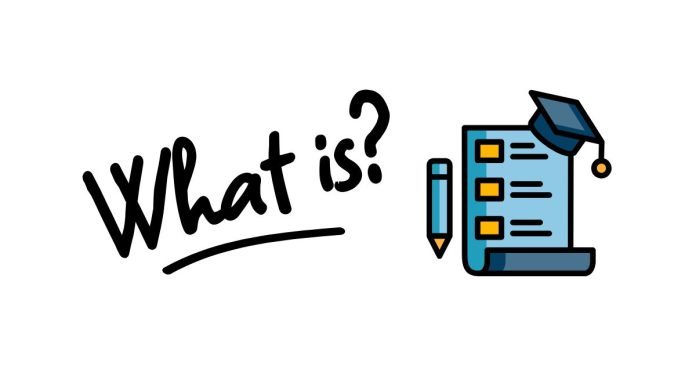A syllabus is a crucial document in education, outlining what students can expect from a particular course. Whether you’re a student, a teacher, or simply someone curious about academic processes, understanding what a syllabus is and what it contains can help you navigate the course structure with confidence. In this blog post, we’ll explore the concept of a syllabus, its purpose, and why it’s such an important tool for both students and instructors.
What Is a Syllabus?
A syllabus is an official outline or plan for a course of study, often provided at the beginning of an academic term. It serves as a roadmap for both students and instructors, detailing the topics to be covered, course expectations, grading policies, and important deadlines. In essence, it acts as a guide to the course, giving students a clear understanding of what to expect and how to prepare.
What Does a Syllabus Include?
A typical syllabus contains several key components that help students stay organized and focused throughout the course. Here are some of the most common elements you’ll find in a syllabus:
- Course Information:
- Course Title: The name of the course.
- Course Code: An alphanumeric identifier for the course.
- Instructor Information: The name, office hours, contact details, and any teaching assistants’ information.
- Course Schedule: Important dates such as the start and end of the course, holidays, and any special class events or trips.
- Course Objectives and Goals:
- This section outlines what the course aims to achieve and what students should expect to learn or accomplish by the end of the term. These goals can range from gaining specific knowledge on a subject to developing particular skills.
- Reading Materials:
- This includes required textbooks, articles, websites, or other resources students must review in order to succeed in the course.
- Assignments and Grading Criteria:
- Details about assignments, projects, quizzes, exams, and any other forms of assessment. This section also specifies how each component will be graded and the weight each carries toward the final grade.
- Course Policies:
- Attendance: The expectations around attendance and participation in class.
- Late Work: Information about penalties for late submissions, if applicable.
- Academic Integrity: Rules against plagiarism and cheating.
- Communication: Guidelines for how students should communicate with the instructor (via email, office hours, etc.).
- Course Schedule/Timeline:
- A week-by-week or day-by-day breakdown of topics, readings, assignments, and exams, helping students keep track of what is coming up and how they should prepare.
- Resources and Support:
- This may include information about academic support, tutoring centers, counseling services, or technical help for online courses.
Why Is a Syllabus Important?
A syllabus plays several important roles in the educational process, both for students and instructors. Here’s why it matters:
- Clear Expectations:
- For students, the syllabus sets clear expectations about what is required to succeed in the course. It helps them understand what they need to do to earn a good grade, as well as when assignments are due and how the course will unfold.
- Organization:
- With a detailed syllabus, students can stay organized and plan ahead. They can manage their time effectively by knowing when exams will take place and when assignments need to be submitted. For instructors, the syllabus serves as a planning tool to keep the course on track.
- Guidance:
- The syllabus offers guidance to students about the course content and learning outcomes. It outlines the specific skills and knowledge they are expected to acquire, providing them with a sense of direction throughout the semester.
- Reference:
- Throughout the course, the syllabus acts as a reference point for students. If they forget when an exam is scheduled or what reading is due, they can easily look it up in the syllabus.
- Communication:
- For instructors, the syllabus is a means of communicating important information about the course, including policies on grading, participation, and expectations for student conduct.
How to Use a Syllabus Effectively
As a student, here are a few tips to make the most of your syllabus:
- Review It Early:
- Read through the syllabus thoroughly at the start of the semester. This will help you understand what’s expected of you and how you can succeed in the class.
- Highlight Key Dates:
- Mark important deadlines, such as exam dates and assignment due dates, on your calendar. This will help you stay organized and avoid last-minute stress.
- Refer Back to It:
- Whenever you have questions about the course, refer back to the syllabus. It’s likely to have the answers to your questions regarding assignments, grading, and other policies.
- Stay on Top of Assignments:
- Use the syllabus as a checklist to track assignments, readings, and exam preparations throughout the semester.
- Communicate with the Instructor:
- If something is unclear or you have concerns about a policy, use the contact information in the syllabus to reach out to the instructor. Effective communication can resolve misunderstandings early.
The syllabus is a vital tool in the academic world, providing both students and instructors with a clear framework for the course. It helps students stay organized, understand course expectations, and achieve their academic goals. By carefully reviewing and using the syllabus, students can set themselves up for success and navigate the course with confidence. So, next time you receive a syllabus, take the time to read through it thoroughly – it’s your guide to the semester ahead!


